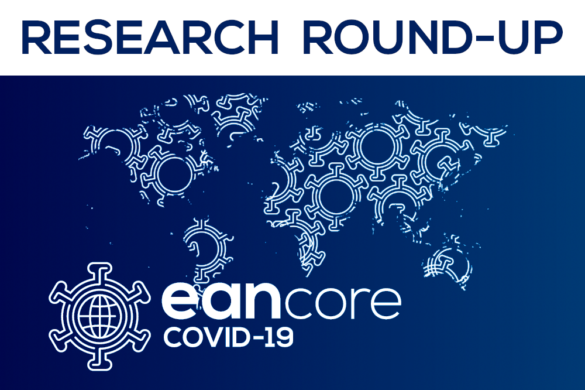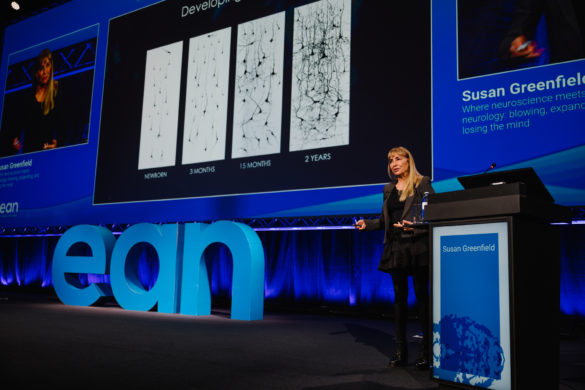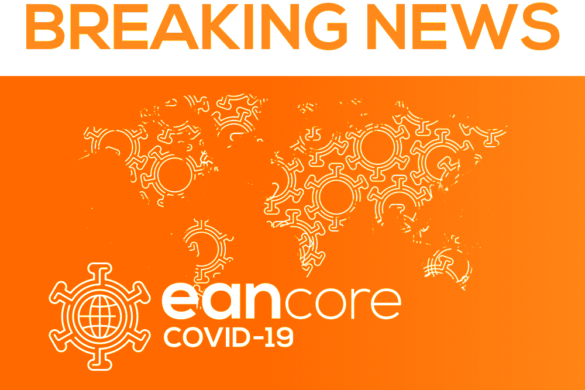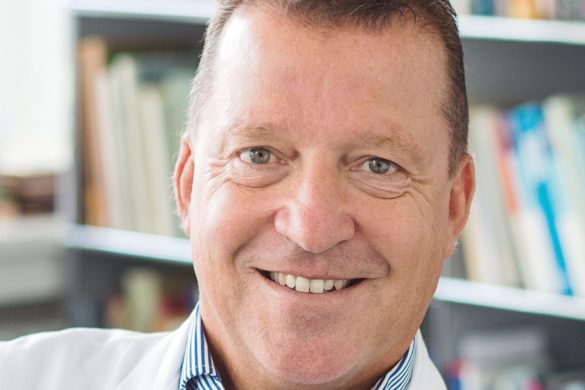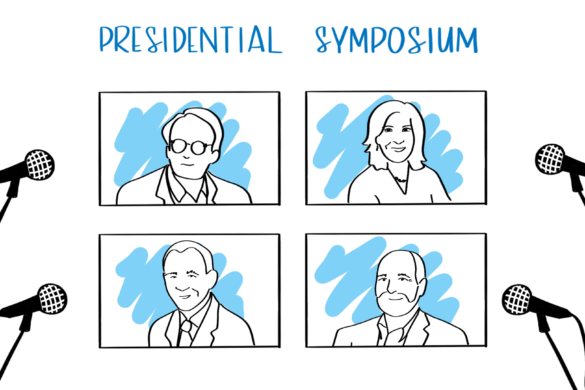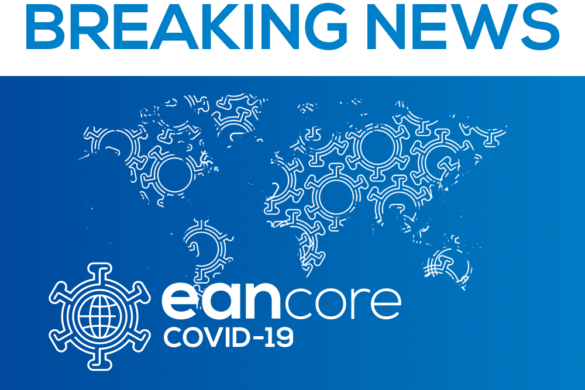by Benedetta Bodini
This interesting session covering the current evidence and guidance on the management of epilepsies started with a lecture by Prof. Mar Carreno Martinez from Spain, who discussed how to diagnose epilepsy. She started her lecture with a reminder that misdiagnosis of epilepsy is common and we need to avoid it in our clinical practice. Since 2014, epilepsy has been defined by the occurrence of at least two unprovoked seizures occurring more than 24 hours apart, by the occurrence of one unprovoked seizure and a probability of further seizures similar to the general recurrence risk (at least 60%) after two unprovoked seizures over the next ten years, or by having an epileptic syndrome. In common clinical practice, it can be challenging to differentiate epileptic seizures from other paroxysmal events, such as panic attacks, syncopes, psychogenic seizures, migraines, parasomnias and transient ischaemic accidents. For an accurate differential diagnosis, Carreno Martinez underlined that a careful history taking is essential. The input of a reliable witness, especially in the case of seizures involving loss of consciousness, is of great added value. If patients report the occurrence of multiple episodes, the identification of triggers, aura or premonitory symptoms, postictal confusion, drowsiness, migraine and myalgia are relevant elements that have to be collected to confirm the diagnosis. Typical elements supporting the diagnosis of seizures include waking with tongue bite, amnesia after the episode, witnessed unresponsiveness, abnormal movements and the lack of typical prodromal symptoms of syncope. However, tongue biting is helpful in differentiating epilepsy from syncopes but not epileptic seizures from psychogenic crises, and urine loss is not very useful in differential diagnosis. Some other semiological elements can help to differentiate epileptic seizures from psychogenic nonepileptic seizures, such as closing eyes during an attack, which is significantly more frequent in psychogenic than in epileptic seizures. Of course, EEG is a key element in differential diagnosis, as epileptiform EEG abnormalities found after a first seizure have been shown to support the diagnosis of epilepsy with a specificity of 94%. Carreno Martinez also indicated that around 40% of episodes preceding the first epileptic seizure are not recognised as seizures at the time of their occurrence, and that it is therefore of great importance to identify potential epileptic episodes that may have preceded the first one. She also insisted on the importance of differentiating unprovoked from acute symptomatic seizures following an acute event (such as an acute metabolic disturbance, a traumatic brain injury, a subdural haematoma…), in which the risk of recurrence is low (30%).
Missed this session?
Watch on demand via our Virtual Congress Platform – click here!
Carreno Martinez then moved onto defining the different types of epileptic seizures, based on the clinical characteristics of seizures and on their EEG correlates. While in most cases of focal epilepsy the interictal EEG will show focal epileptiform discharges, the lack of interictal EEG abnormalities is still compatible with the diagnosis of focal epilepsy. She concluded that a rapid and accurate diagnosis of epilepsy has profound implications on the life of patients, and is essential to inform the prognosis and to guide effective treatment.
In the second lecture of the session, Prof. Tony Marson from the UK discussed the medical treatment of epilepsy. He started his lecture reminding that the choices made by neurologists to treat epilepsy should be based on clinical effectiveness, safety and cost effectiveness. He underlined that placebo-controlled trials are essential to establish the clinical effectiveness of new anti-epileptic drugs (AEDs), but they are not useful in providing information on long term clinical effectiveness and cost effectiveness of AEDs, and in indicating which treatment among all the available drugs is best for a specific type of patients with epilepsy. Marson underlined that we lack head-to-head clinical trials, and that we critically need more pragmatic randomized controlled trials, i.e. longer clinical trials reflecting every day clinical practice to measure long-term clinical and cost effectiveness of AEDs. While not being able to inform regulatory decisions, this type of trial is essential to inform clinical practice and policy. Marson then presented an example of this type of study, the SANAD II study, which aimed to assess the long-term clinical effectiveness and cost-effectiveness of levetiracetam and zonisamide compared with lamotrigine in people with newly diagnosed focal epilepsy. The results of this study indicated that, unlike zonisamide, levetiracetam did not meet the criteria for non-inferiority in the intention-to-treat analysis of time to 12-month remission versus lamotrigine. Moreover, the per-protocol analysis showed that 12-month remission was superior with lamotrigine than both levetiracetam and zonisamide. Adverse reactions were reported by 33% of participants who started lamotrigine, 44% of participants who started levetiracetam and 45% of participants who started zonisamide. Finally, lamotrigine was shown to be superior in the cost-utility analysis, compared with the other two treatments. Overall, data from this study clearly indicate that lamotrigine should remain the first-line treatment of choice for patients with focal epilepsy, and should be preferred to levetiracetam and zonisamide. Marson then indicated that our therapeutic choices should be taken considering trade-offs between benefit and harm of different AEDs. For example, in the case of sodium valproate, which has been demonstrated to be associated with congenital malformation outcomes in the offspring, women have been shown to be prepared to accept a 5% reduction in 12 months seizure remission for a 1% reduction in foetal malformations. He indicated that international and national societies have made a great effort in producing guidelines for the treatment of epilepsy, but it is also essential that guidelines are effectively implemented and translated into common clinical practice. Finally, Marson underlined that our services are not yet configured to meet the real needs of people with epilepsy, if we consider that in the United Kingdom less than half of first seizures are referred to a seizure clinic, and that less than half of known epilepsies are under active follow-up.
Professor Kristl Vonck from Belgium concluded this session discussing the surgical treatment of epilepsy. She started her lecture mentioning that drug resistant epilepsy remains one of our major concerns in common clinical practice. She underlined that the definition of drug resistant epilepsy can be made after a failure of two appropriately chosen and tolerated AEDs, used in monotherapy one after the other or in combination. Indeed, while usually 64% seizure control is obtained after the use of the first drug, only 32% of seizure control is obtained after the second AED and less than 10% after the third. Therefore, once two different AEDs have been unsuccessfully tried for one year for example, we have to immediately start looking at other options, including epilepsy surgery, rather than waiting many years trying other AEDs which will have a very limited probability of succeed in controlling further seizures. The goal of brain surgery is to remove the brain area involved in seizure generation, resulting in the complete elimination or at least in the significant reduction of epileptic seizures. Overall, 60% of people with epilepsy have focal epilepsy and of these 20-30% have drug resistant epilepsy. Presurgical evaluation to identify good candidates for brain surgery consists of a multidisciplinary assessment conducted in specialised epilepsy centres. The first objective of the presurgical evaluation is to identify the epileptogenic zone which is the area necessary and sufficient to generate seizures, while the second one is to assess whether a surgical approach could be able to effectively remove the pathological tissue without adverse effects. Firstly, a full clinical history is collected, to identify previous neurological disorders (including febrile seizures, meningitis, encephalitis, stroke, head trauma), describe family history, and obtain a detailed description of seizures and of their evolution over time. Video-EEG monitoring is the cornerstone of epileptic surgery as it provides the electro-clinical correlation of epileptic activity and it allows the subclassification of epileptic seizures. Another key element needed to detect an epileptogenic lesion is brain MRI. Up to 75% of patients with focal epilepsy have been shown to have structural abnormalities, such as hippocampal atrophy and cortical dysplasia, detectable on MRI. FDG-PET can also have a major role in presurgical evaluation, as it can allow to identify hypometabolic regions with good electriophysiological correlations even in when brain MRI is normal. In the presurgical evaluation of patients, more invasive tests such as the Wada test, which is a presurgical language and memory test to prevent language and memory troubles after surgery, can also be proposed. While the Wada test can sometimes be replaced by functional MRI (fMRI) which is significantly less invasive, the assessment of post-surgery sequelae with fMRI can be more challenging. Vonck underlined that when non-invasive testing is inconclusive in finding a unique epileptogenic region, another potential option is to use invasive video EEG monitoring, which may be very helpful in identifying where the true origin of the seizure is. Unfortunately, after presurgical assessment, 50% of patients are identified as not being eligible for brain surgery. When considered eligible for brain surgery, patients can be proposed to undergo resective surgery, such as lobectomy, lesionectomy and hemispherectomy, or disconnective surgery, where nerve fibers through which abnormal epileptic activity spreads to adjacent tissues are surgically disconnected. In temporal lobe epilepsy, two randomised controlled trials have indicated that epilepsy surgery leads to 60-70% seizure freedom at 2-5 ys vs 0-10% with medical therapy. Vonk indicated that factors associated with optimal outcome following brain surgery include well defined MRI abnormality – ictal EEG, a complete surgical lesion removal, a history of febrile seizures and the presence of hippocampal sclerosis. Vonk concluded her lecture describing novel approaches with the potential to overcome some of the limitations of brain surgery, such as the morbidity and mortality associated with it. Among these, focused ultrasound might be particularly promising. This is a non-invasive MR-guided ultrasound-based approach which may be able to provide ablation of epileptogenic zones, sonomodulation, or even targeted therapy delivery through the opening of the blood-brain barrier.




